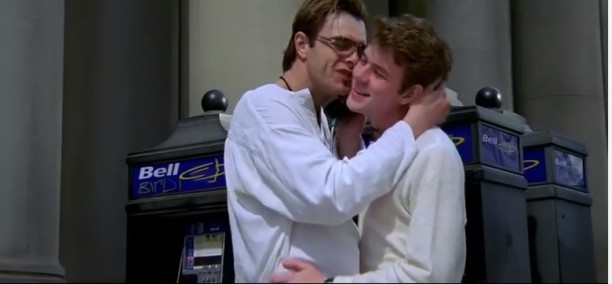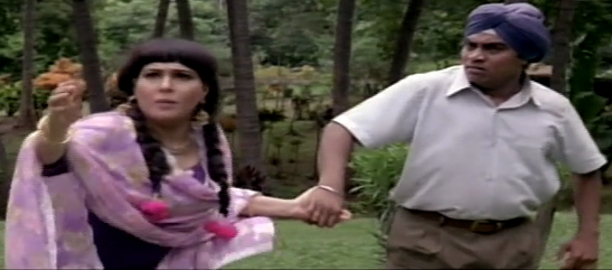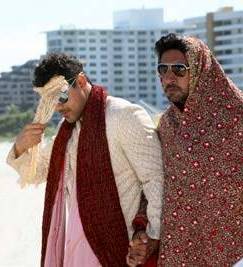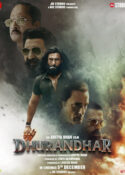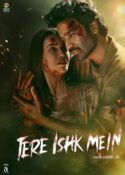In celebration of BFI’s London LGBT film festival Flare, as well as the same-sex marriage law coming into effect in the UK during March 2014, BollySpice have put together a selection of Bollywood LGBTQ (Lesbian; Gay; Bisexual; Transgender; Queer) moments.
Although Section 377 is still in place in India, continuing to (re) criminalise homosexuality, Bollywood is currently in anticipation of the first commercial Bollywood homosexual love story, Romil and Juggal,
Wait a minute… Yes, you read it right: Bollywood’s first commercial homosexual love story.
Produced by Balaji and directed by Danish Aslam, Romil and Juggal is based on Shakespeare’s famous Romeo and Juliet, with a male lead couple.
Danish Aslam recently stated that just because Romil and Juggal is a homosexual love story, this does not make things different – “To me, Romil & Juggal is just like any love story. It doesn’t matter if the lovers are both men.”
This statement is not only refreshing but promising for LGBTQ rights as film is a powerful medium for positive social change.
True, Bollywood has celebrated LGBTQ lives and loves.
However, Bollywood has also portrayed homosexuality, transgender identity, or breaking the mould of gender “norms” as negatively different. These depictions have not always been sensitive or understanding. Often, cringe-worthy LGBTQ moments have been produced that make one wonder where the joke is.
These moments of “comic-relief” and negativity reflect a tragic reality for many LGBTQ persons who struggle to be themselves and accepted in society.
Through our explorations below, we discuss what makes the relevant LGBTQ moment good, bad or cringe-worthy. We also state our opinion on how these moments may benefit or be detrimental in the fight towards LGBTQ rights.
The Good
Kal Ho Na Ho:
A gay couple is portrayed in the romantic song “Kuch Toh Hua Hai”
Thumbs Up: The lyrics describe the magic of falling in love. By including a homosexual couple amongst heterosexual couples, the message that love is love and the same for all – regardless of sexuality.
Dostana:
Sameer (Abhishek Bachchan) and Kunal (John Abraham) pretend to be gay to secure an apartment with Neha (Priyanka Chopra). Things get complicated when Sameer’s mother discovers that her son is gay.
Thumbs Up: Sameer playing it gay brings up an important LGBTQ issue – family acceptance. Sameer’s mother eventually accepts her gay son, becoming a role model for many parents.
The Bad:
Raja Hindustani
An androgynous female becomes “correct”, “proper” once she is stereotypically female and married to a man.
Thumbs Down: Happiness, social acceptance and the true purpose of life are portrayed within heterosexual norms. Anything outside is mocked and presented as “abnormal”. This is detrimental as people should be free to be who they are rather than intimidated to fit into a “box” or “label”.
Dostana:
Maa Da Ladla: The Song
http://www.youtube.com/watch?v=CGr09U2dYrI
Thumbs Down: With lyrics like “Heer mile na isnu, ye ranjhe uthe mar gaya. Gora chitha mukhda. Dekho kala kar gaya…” (He couldn’t find a woman so he fell for a man. He has shamed himself and tainted his reputation) firstly the misunderstanding that homosexuals are unsuccessful with the opposite sex, hence “choosing” a member of the same-sex is presented. Secondly, same-sex love is portrayed as shameful- something that prevents many people from coming out and living an honest life, as well as preventing many to accept homosexual friends or family members. The chorus itself, “Maa Da ladla bigaad gaya” (Mummy’s boy has gone rotten) depicts homosexuality as an abnormal “disease”.
And The Cringe- worthy:
Kal Ho Na Ho:
The “Kantabehn” sequence of the elderly housemaid “walking in” on Aman (Shah Rukh Khan) and Rohit (Saif Ali Khan) is just plain cringe worthy.
http://www.youtube.com/watch?v=KaIdJbfffTM
Thumbs Down: Serving as comic relief, the serious misunderstanding of homosexuality being just about sex (especially promiscuous sex- as suggested by Rohit forgetting Aman’s name when introducing him to Kantabehn) becomes a serious obstacle for many LGBTQ persons to get family understanding and acceptance.
Dostana:
The idea that there must be a “man” and a “woman” in a same-sex relationship.
Thumbs Down: True, some same-sex couples can be “butch” and “femme”, or butch and butch, femme and femme or even a mixture – people fall in love with the person, not a gender.
However, why portray and play on a stereotype whilst trying to “compartmentalise” love?
This stereotype is perhaps to blame for the annoying and awkward question faced by many LGBTQ couples: So which one of you is the man and which is the woman?

